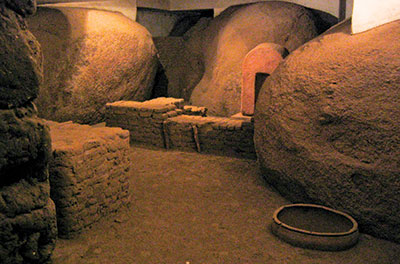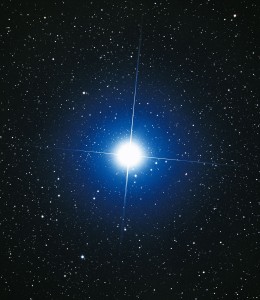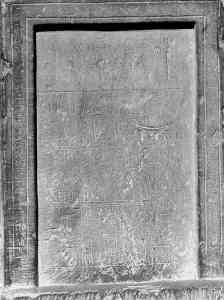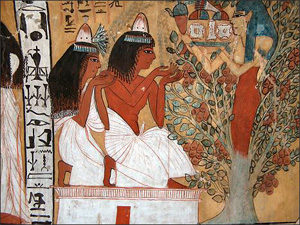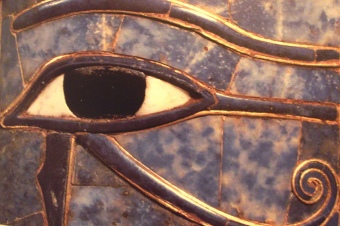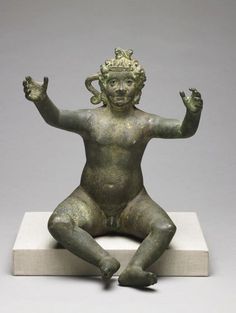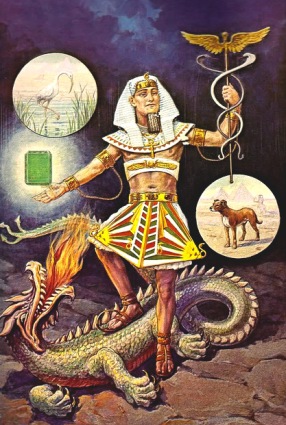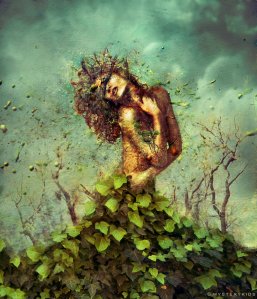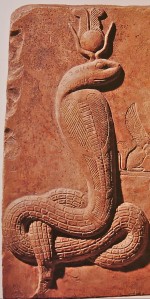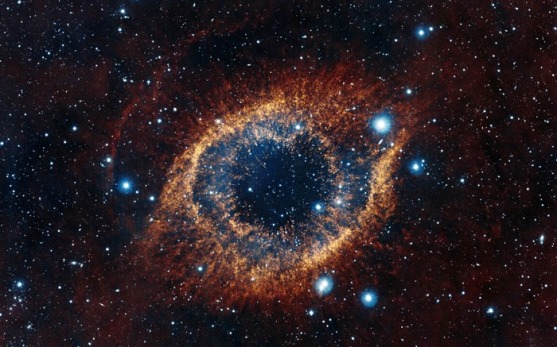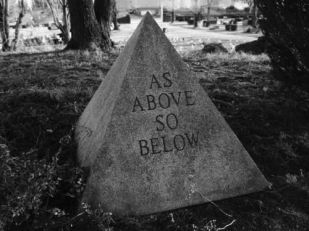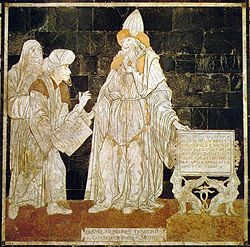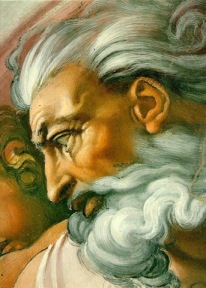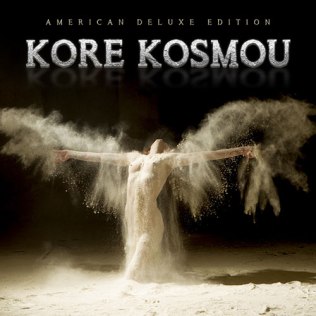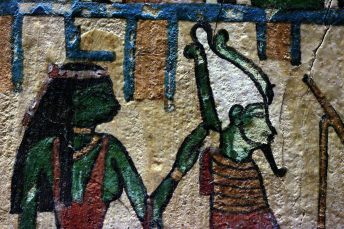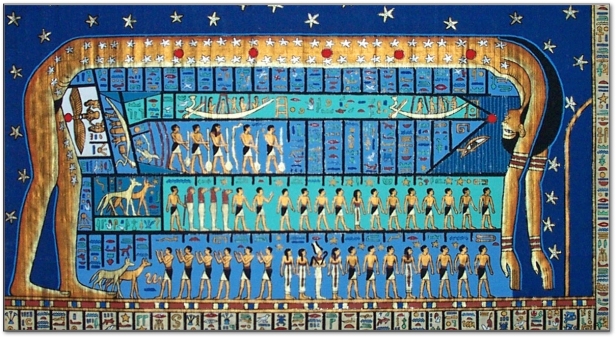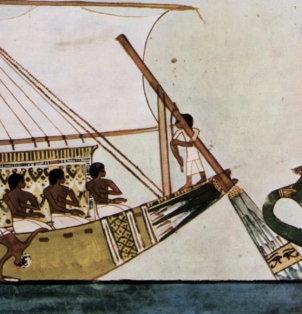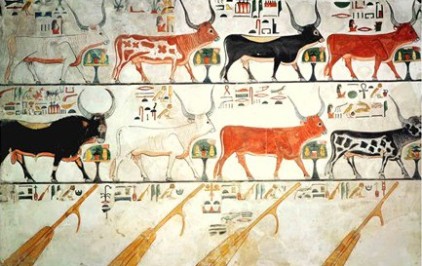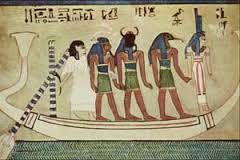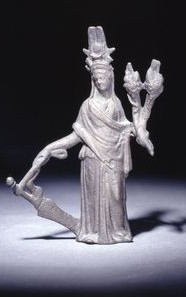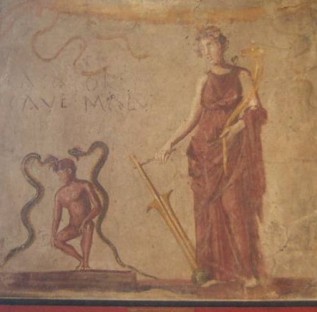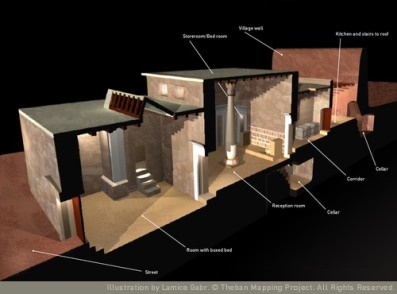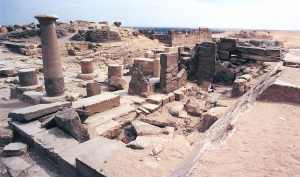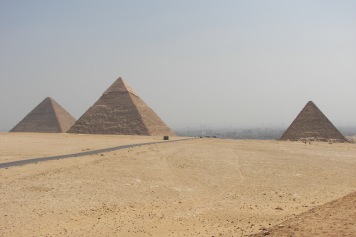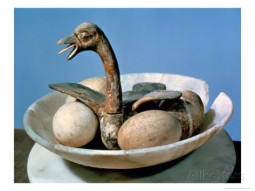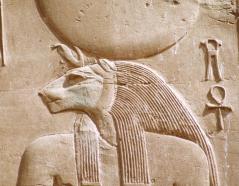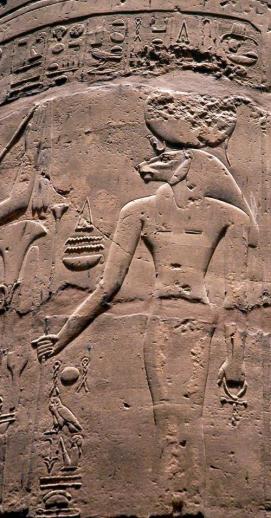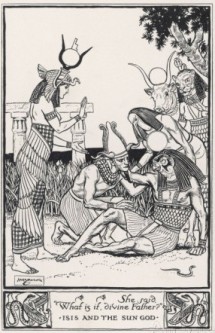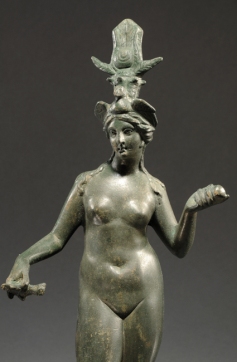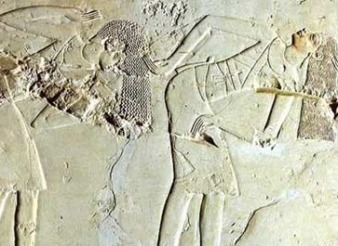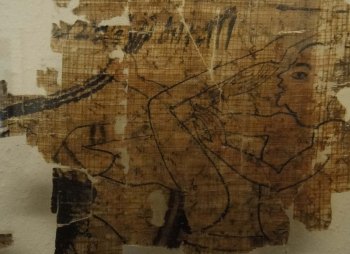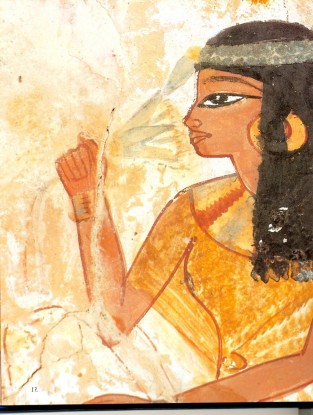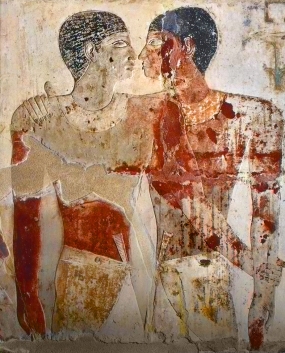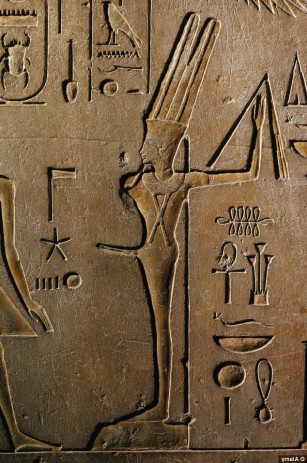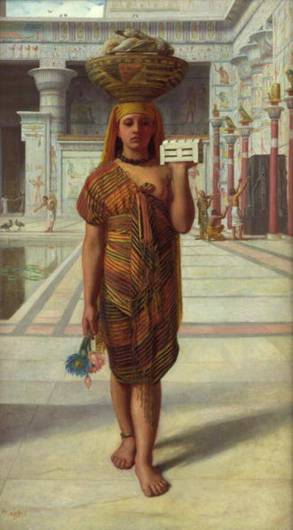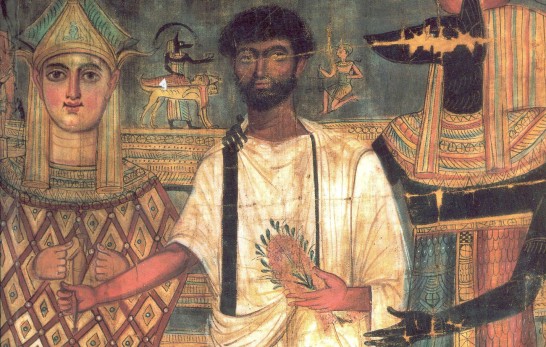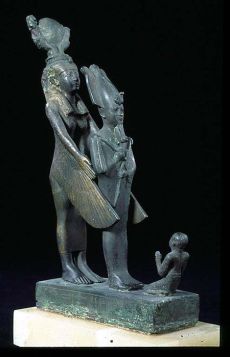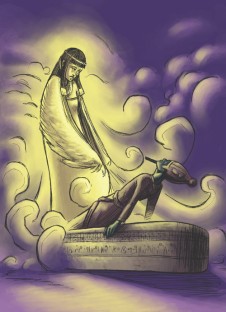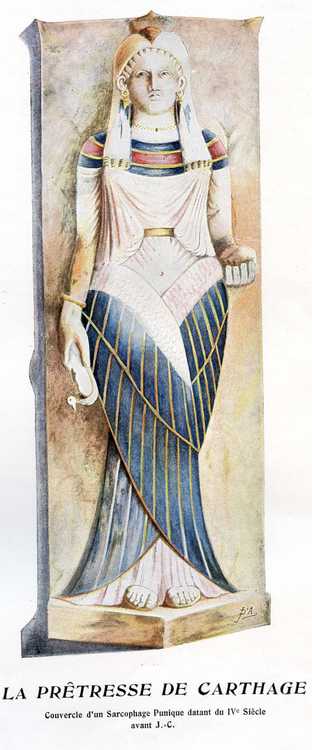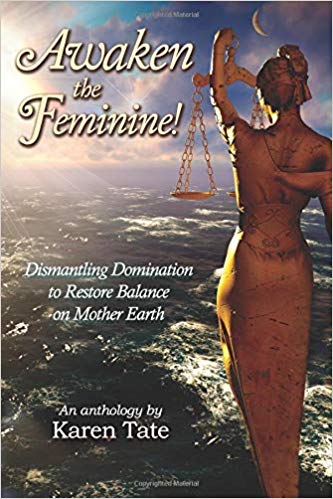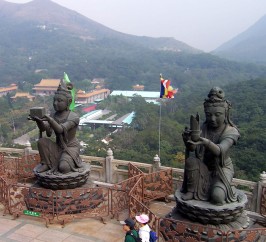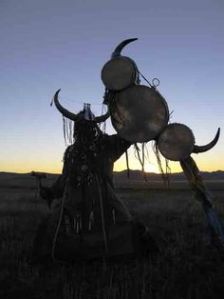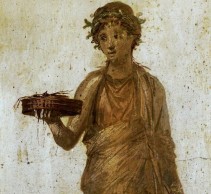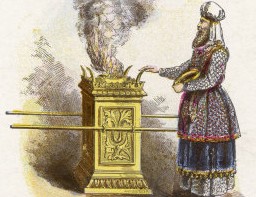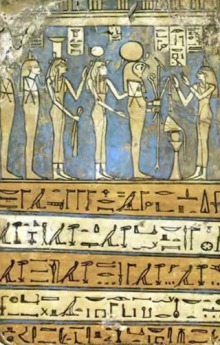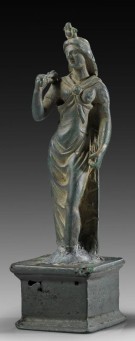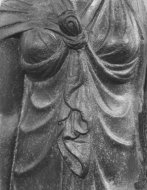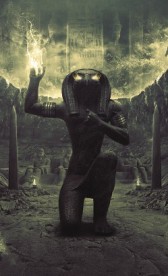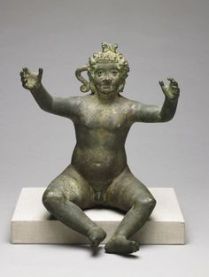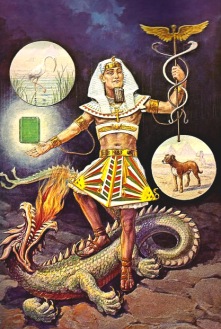
Affirmations Goddess Deck Tarot Club Interview With Tarot Club President, Tina Swanson.
The following is my interview with Pamela Wells; author and artist of Affirmations for the Everyday Goddess deck. She wrote and designed a spiritual guide book along with her beautifully illustrated 22 wisdom cards for contemplation & prayer. The following post will be our interview and then members will have a great opportunity to ask Pamela questions thereafter. Pamela has agreed to answer what she can and is really excited to interact with members directly.
Tina: Could you please tell us a little bit about your background?
Pamela: I have been working as a commercial illustrator, graphics and web designer for many years. In the emerging field of digital artwork, I have developed my own unique style of painting. My artwork has been published in digital how-to publications and I have written how-to digital articles for both local and national publications. After publication of the Goddess deck, I began working as a fine artist.
Tina: Why did you decide to create a deck on your own?
Pamela: Initially, I was approached by a publisher to illustrate a deck for women. After doing some initial research by calling about two dozen tarot artists willing to share their experiences, I decided not to. What I heard didn’t make business sense for me in royalties (income earned) for the amount of time it would take for me to illustrate a complete deck set in my detailed, illustrative style. Despite this, I continued painting and a few years later I signed a contract with a different publisher. About 2 years into the process they canceled the contract after restructuring the company. So, there I was with finished cards and book and no publisher! I was very disappointed but not discouraged.
Fortunately at the same time I was doing product design work for a client who contracts with overseas manufacturers and I realized I had most of the skills and the financial resources I needed to publish and market the deck myself – graphic design, illustration, writing, prepress and marketing. I created a business plan and the business plan made sense if I contracted the printing with an overseas printer.
Tina: What inspired you to create the Affirmations for the Everyday Goddess deck?
Pamela: It started with a very challenging portfolio review I did through the Society of Illustrators. I was doing a lot of work as a commercial illustrator at the time and so after years of doing technical illustrations I felt it was time to try something more creative. During the portfolio review I was told I needed to focus on one style I really loved and felt passionate about. It was great advice but I couldn’t help but wonder if it would pay the bills especially since the first two paintings were an angel and Sophia, the goddess of wisdom!
Tina: The Affirmations for the Everyday Goddess deck consists of the 22 Major Arcana cards and a guidebook. Why did you decide to use the majors only? Would you consider adding the minors in the future?
Pamela: I realized after talking to other artists and looking at the royalties earned that it would not make sense for me to spend so many years painting in my very detailed style. Limitations of time and money helped me to think about how I could create a deck that would be meaningful, useful, and unique and of high quality for both Tarot enthusiasts and those unfamiliar with the Tarot and just wanted a guiding tool.
Tina: What makes this deck a collector’s edition? Will it be followed up with something else?
Pamela: Yes, after this initial printing, I will be enhancing the book copy, card frames and box design. This Collector’s edition is the only edition that will have gold metallic ink. The next edition will be called the 2nd edition. Because I am the creator of a self-published deck, I can take more risks in how the work is presented and be very selective in the quality and limit distribution of the artwork.
Tina: The back of the cards have a leopard coming out of a luscious green jungle. Most decks have very plain backs, what made you decide to spice yours up a bit?
Pamela: As you and many practicing Tarot Club members know, for those who do reversals, plain backs are needed so the querent can’t see whether the card is upside down. Additionally, the Major Arcana cards are very special because they contain deep and complex archetypal meaning. This is why I paid very close attention to creating imagery (including painting a story on the backs of the cards) that would inspire seekers to take a closer look at the rich, mystical meaning within each card. So, focusing a deck on the Major Arcana gives seekers of all skill levels an easy-to-use tool for inner guidance and can help focus the mind during contemplation and prayer.
Inner guidance can be received in so many ways! For those who have spent time studying the Tarot, guidance can come from a traditional or more comprehensive Major Arcana spread using just the majors.
For those unfamiliar with the Tarot, inner guidance can come by simply focusing the mind on the card imagery and/or affirmations. Any way a seeker intuits they would like to receive inner guidance is perfect with this set of cards.
I believe that paying attention to and understanding the archetypal imagery of the Major Arcana gives us all the opportunity to learn about archetypes and helps us evolve into a more direct dialogue with God.
Tina: Your guidebook concentrates more on obtaining true wisdom from the cards through contemplation and prayer and finding answers from within rather than through the more traditional methods of seeking information through outside sources. What moved you to go this direction?
Pamela: I believe we have arrived at a very crucial time in human history and we will either choose our own divine evolution or more needless suffering. If we are to choose the path of inspiration and wisdom, we must evolve into our deeper potential of our emotional, intuitive right brain to become whole-brained thinkers.
This deck is designed to encourage anyone to become more trusting of their own inner guidance (right brain thinking) by using the tarot as a tool to increase and more easily access emotional, instinctual and intuitive skills. Divination tools like the Tarot are meant to help us communicate with God before taking the most powerful step of communicating directly with God.
I wrote the guidebook from a universal and evolutionary perspective of the human experience growing in awareness towards greater self-knowledge and spiritual development. The definitions given by most decks are integrated into the guidebook.
The guidebook is written with the purpose of providing clarity and bringing back into focus the wisdom teachings of the Major Arcana right down to their alchemical, mystical roots. There is a question and answer section at the end of each chapter for everyday mystics ready and brave enough to work through them!
Tina: How long of a process was it from the beginning to the completion of the deck?
Pamela: This entire project included illustration of the cards, writing the guidebook, designing the book, cards and box and managing overseas printing. All of this was integrated into my working week when I was able to find the extra time. From the day I was contacted by the first publisher to the date of delivery, I believe the conception, production and completion of the project has taken about eight years! One painting can take me several weeks to complete.
Tina: What was the easiest card to create? What was the most difficult?
Pamela: The High Priest card was the easiest to create because it was a close-up portrait and I didn’t need to work out all the compositional detail that was needed in the other cards.
The Tower card was the most difficult because I am more comfortable painting figurative compositions of people and animals rather then compositions of structures like exploding towers!
Tina: Did you encounter any major issues or problems when making or creating the deck?
Pamela: Nothing too major was encountered. Although there was one stressful period of time during the printing process when the printer in Thailand accidentally printed the gold metallic plates in the wrong sequence. We ended up reprinting the box wraps for all of the boxes. The delay was two-months due to the extra time it takes to work long distance and to reproof the final comps.
Tina: Anything you regret or you wish you could redo?
Pamela: I would hire another editor to proof the last-minute proof! I introduced a few typos in the last draft.
Tina: Do you use your own cards for direction or advise for yourself or others?
Pamela: Yes, I do use my cards for my own readings and for focusing my mind during meditation. I especially like reading the Wisdom Prayer Guide card because for me it is comforting.
Tina: Do you read tarot cards and if so for how long and how did you get interested in the Tarot?
Pamela: I don’t read tarot cards although I certainly could. Rather, I prefer to do “Sacred Contract” readings. (More information about a Sacred Contract reading is on my blog). One of the humbling realizations I had when studying the mystical aspects of the tarot was how much profound, universal wisdom each card contains which is a demonstration of the timeless value and power of archetypal imagery. Even before I illustrated the tarot, I had been interested in the study of transpersonal psychology, integral transformative spiritual practice and the evolution of human consciousness so for me, using divination tools was all about learning the divine feminine way of knowing (right brain thinking).
Tina: What are some of your favorite decks?
Pamela: I like the Aleister Crowley Thoth Tarot and the Zerner Farber Tarot deck. I also have a French deck called the Tarot Francais Des Fleur. My mother bought it for me in France and because I am so visually oriented, I really enjoy looking at the illustrations.
Tina: What plans do you have in the future? Do you have any more tarot decks, books or artistic endeavors that we might be interested in?
Pamela: I am working on building a new collection of fine artworks in oil paint. Of course, any art work I paint in the future has everything to do with empowering the goddess in us all.
Tina: To help others learn more about the depth of your deck, in a nutshell how would you describe your deck?
Pamela: The goddess represents the highest example of divine wisdom and inner guidance. The process to self-knowledge is a feminine task (turning inward) for both men and women. She take us down into our souls.
The 22 MA of the tarot represent the archetypal steps we take to “step behind the veil” (High Priestess) in order to deepen our self-knowledge, wisdom and connection with all beings and the Divine. Using the 22 MA as a powerful tool, we learn the mysteries of the universe and can find the answer to questions of our higher purpose and deep meaning. We begin the journey by asking the question (the Fool) “Who am I?
Our planet is at a tipping point and the solutions we seek for complex global problems are WITHIN US. Time is of the essence and we must all become “Everyday Mystics” by learning to use inner guidance tools that help us talk to God and until we are ready to talk to God directly. Of course there are many ways to talk to the divine and learn about the Self. This deck set is one more helpful tool for Seekers.
Tina: Is there anything else you would like Tarot Club members to know or be aware of? Any thoughts or things you would like to bring to our attention?
Pamela: For those who are interested in more information, the deck set can be ordered directly (Retail: $14.95) through my blog store. They can also be purchased online at Amazon or Ebay or at your local bookstore or gift shop. For those in retail sales and who like the convenience of consolidated purchases, New Leaf Distribution and DeVorss and Company distribute the Affirmations for the Everyday Goddess deck.
There is an iPhone app for anywhere convenience or for those on a more limited budget. The deck set iPhone app can be purchased through www.consciousnessapps.com or through the Apple app store in the lifestyle section for $3.99. The iPhone app includes all the cards and guidebook except the explanatory introduction chapters.
Finally, I write articles for my blog called The Divine Feminine Way. I welcome Tarot Club members who may be interested to sign-up.
Tina, it’s been a real pleasure answering your questions. Thank you so much for asking!
Tina: Pamela, I just want to thank you personally and on behalf of the Tarot Club for taking the time to do this interview. The Affirmations of the Everyday Goddess is a truly inspirational & beautifully illustrated deck. Any collector would be proud to add this deck to their collection.
We are so happy that you have decided to become a member of our humble Tarot community; there will always be a place for you here!
I would also like to thank you for your generosity, in sending me a copy of your gorgeous deck, I will add it to my personal collection and cherish it always.
